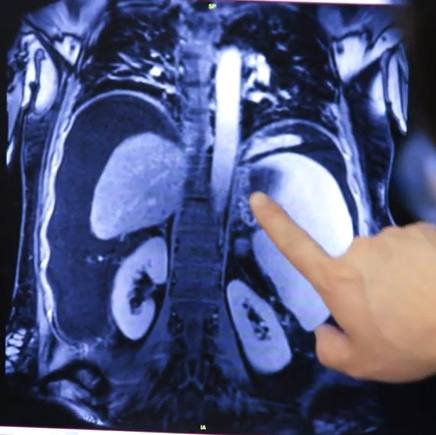-
Mayo Clinic researchers pave the way for individualized obesity therapy, tailoring interventions to a person’s needs

In a pilot study of 165 people, Mayo Clinic researchers looked at the effectiveness of two different approaches to weight loss: a standard lifestyle intervention and individualized therapy. The standard lifestyle intervention included a reduced diet, exercise and behavior therapy. The individualized approach was based on phenotypes and included different interventions depending on the person's predominant underlying cause of obesity. A diet based on phenotypes considers a person's genetic and phenotypic characteristics to create a tailored eating plan meant to optimize health and well-being.
The researchers compared whether diet and lifestyle interventions tailored to obesity phenotypes would work better than standard lifestyle interventions on weight loss, cardiometabolic risk factors and physical variables contributing to obesity. Cardiometabolic health describes the connection between the heart and blood vessels and the body's energy and chemical processes. It covers a wide range of disorders and risk factors that contribute to heart disease and metabolic syndrome.
In adults with obesity, the phenotype-tailored lifestyle interventions resulted in more weight loss than the standard lifestyle interventions of a reduced-calorie diet, exercise and behavior therapy.
Findings after 12 weeks included:
- Patients who used phenotype-tailored lifestyle interventions did better in treating their obesity than those who used standard lifestyle interventions.
- The phenotype-focused group of patients had more significant weight loss, reduced waist circumference, reduced triglycerides, reduced daily caloric intake and less anxiety.
- They had a substantial increase in lean mass percentage.
- They also had a lesser decrease in the number of calories required by the body during resting conditions.
"The results stress the relevance of identifying the underlying cause of obesity as a complex disease with many factors," says Andre Acosta, M.D., Ph.D., a Mayo Clinic obesity researcher and the study's last author.
What is a phenotype-tailored intervention?
Obesity phenotypes are based on the cause of the disease and behavioral components and include three main areas:
- Homeostatic eating — eating in response to a perceived energy need by the brain.
- Hedonic eating behavior — consuming foods for pleasure, not for physical hunger or energy needs.
- Abnormal energy expenditure — the number of calories burned in 24 hours compared to an average person.
Four actionable phenotypes of these areas include abnormal fullness, measured by calories ingested to experiencing unpleasant fullness; abnormal duration of fullness; emotional eating behavior; and abnormal resting energy expenditure.

The researchers reported that people who used the phenotype-tailored lifestyle interventions showed significant improvement in some targeted areas, such as abnormal fullness and emotional eating.
"The results of this study support the need for an actionable, phenotype-based classification [of patients in obesity treatment] rather than relying only on the number on the scale, body measurements or [if they have] obesity-related diseases, such as heart disease, high blood pressure and certain cancers," says Dr. Acosta.
Opportunities for further research
Dr. Acosta says more research is needed to assess the long-term effect of a phenotype-based approach. In particular, further studies may need to look at other physical and metabolic variables to understand people with no identified phenotype.
Dr. Acosta also notes that the effects of therapy on the two approaches must be examined independently. People with an emotional eating component received a more intense intervention, with 24 behavior modification sessions, to address this underlying trait that may have a leading role in obesity development.
"More research will enhance the tailored approach proposed from the data," says Dr. Acosta. "We will continue to work on individualized obesity therapy directed at specific traits to identify the right therapy for the right patient."
Declaration of interests
Dr. Acosta is a stockholder in Gila Therapeutics and Phenomix Sciences; he was a consultant for Rhythm Pharmaceuticals, General Mills, Amgen, Bausch Health, and RareStone; has contracts with Vivus Inc, Satiogen Pharmaceutical, and Rhythm pharmaceutical; and has a patent submitted for biomarkers of a phenotype-tailored diet.








